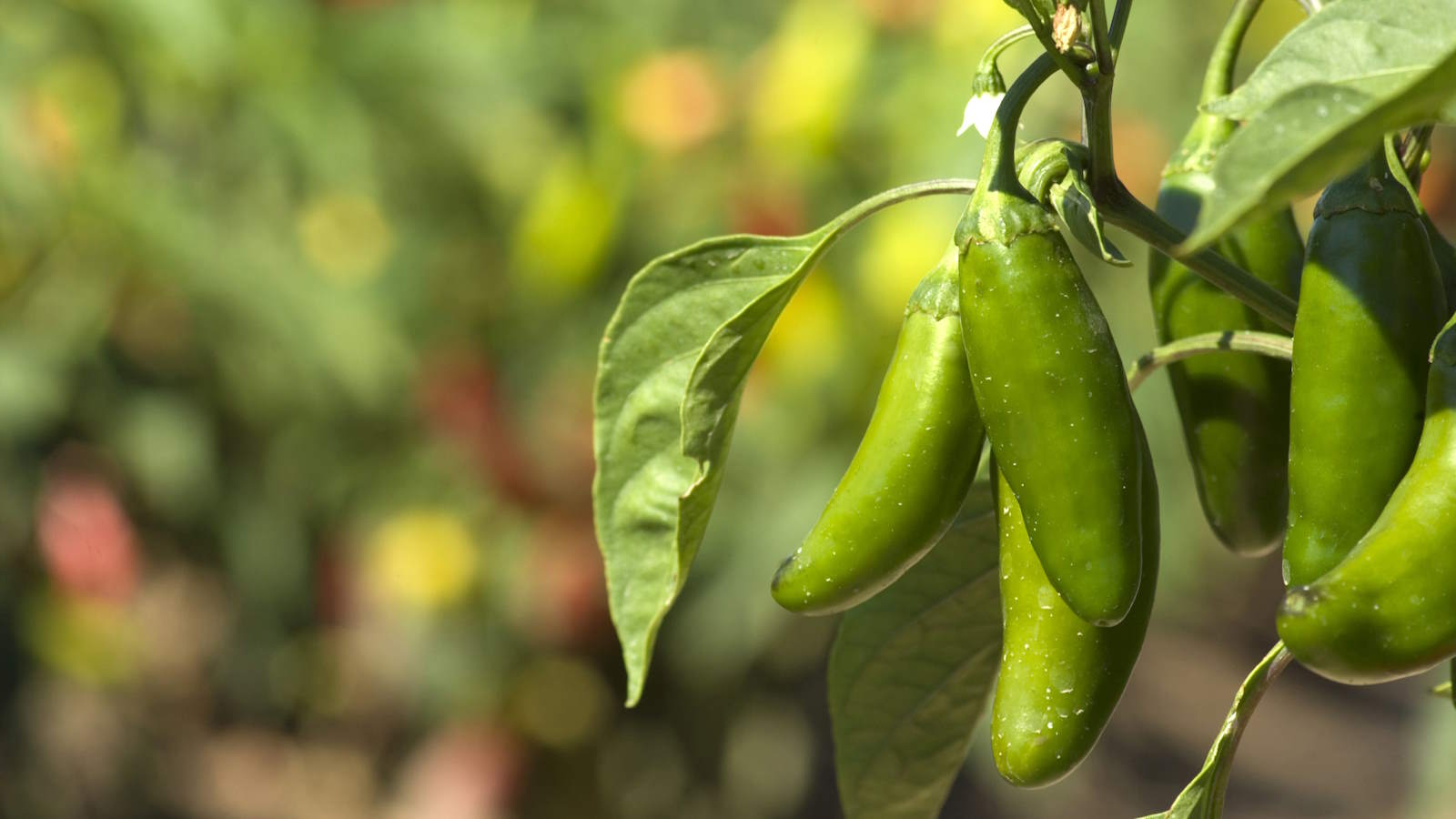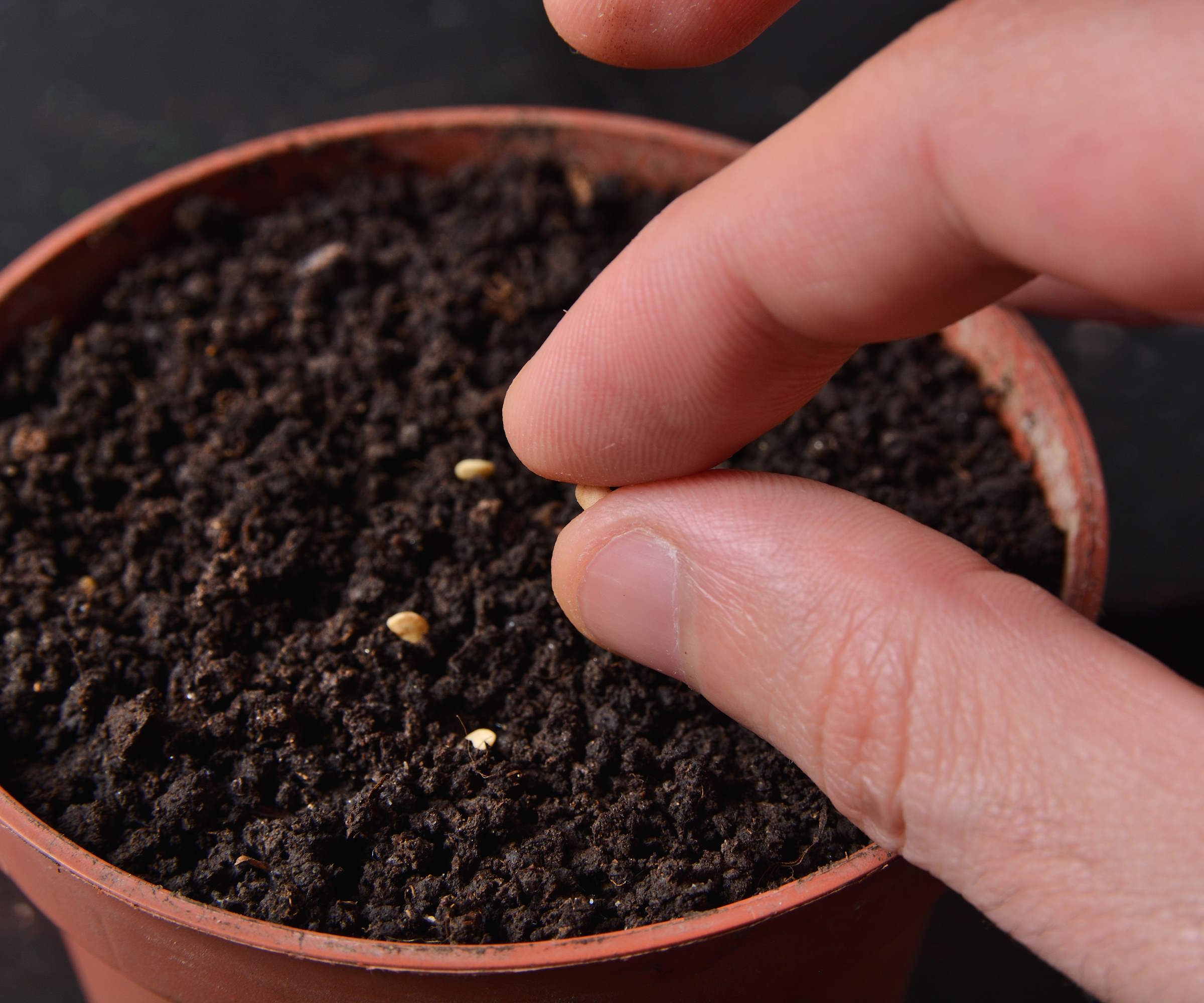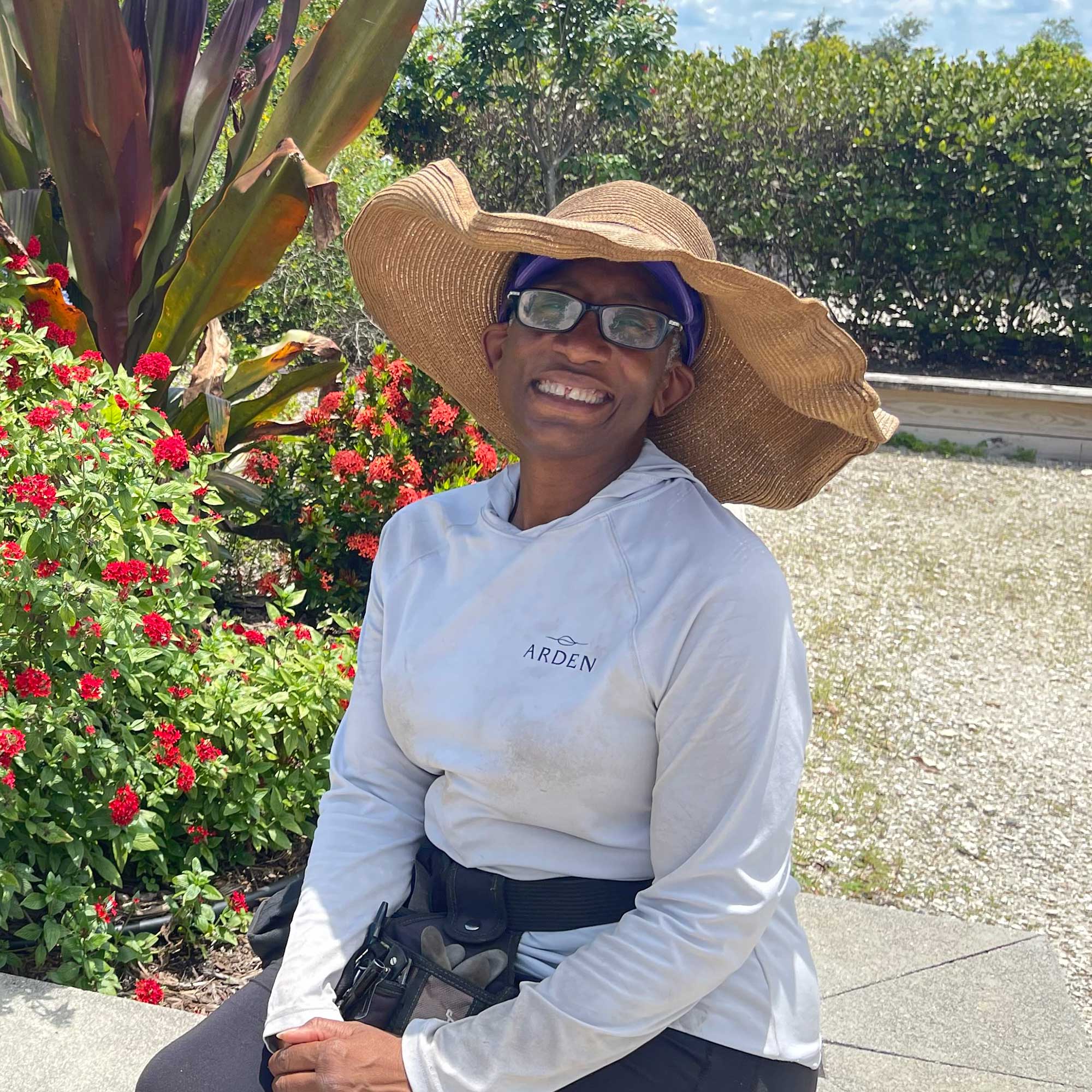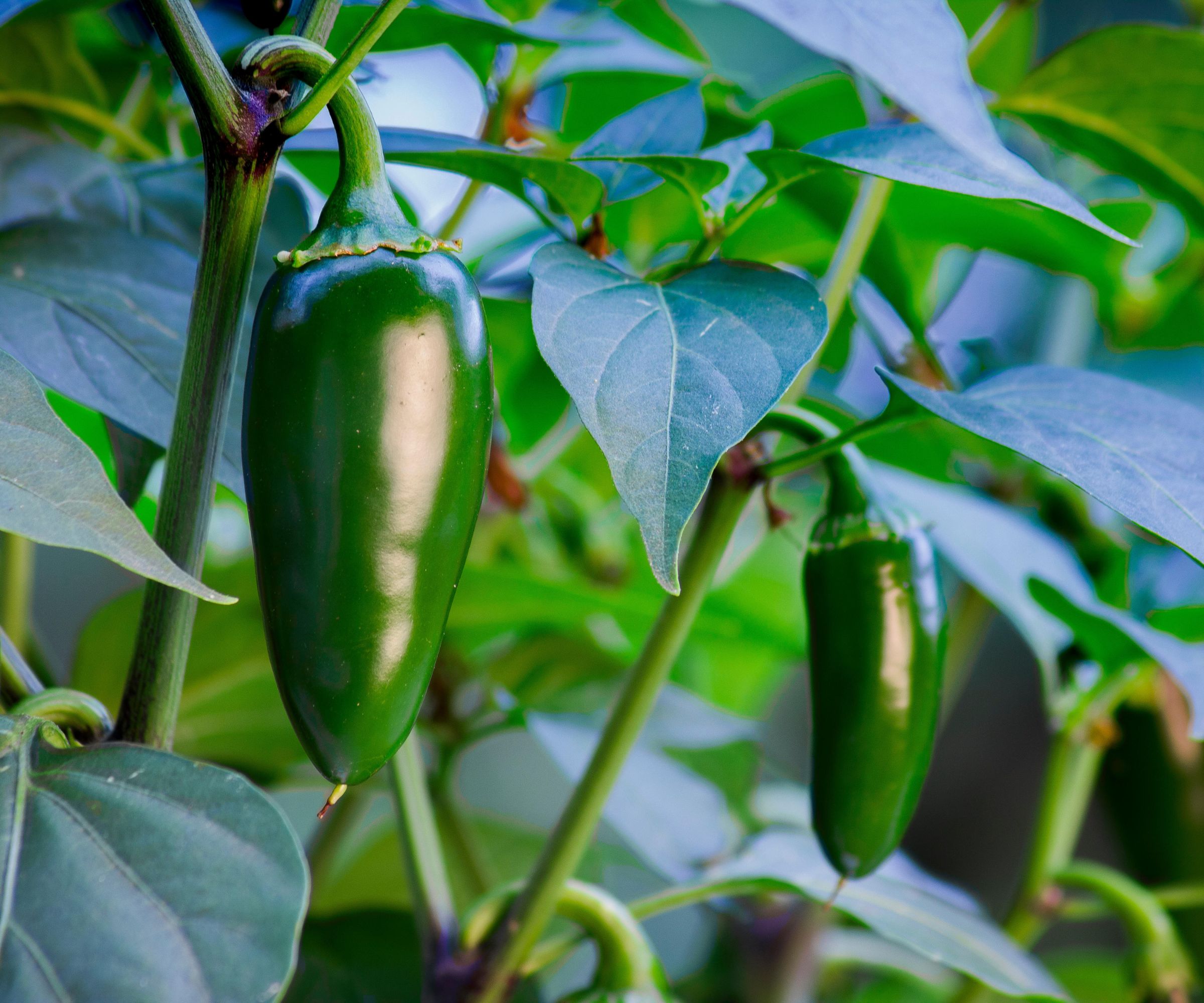How to grow jalapeno peppers and get an outstanding crop of flavorful fruits
Jalapeno peppers can be grown either indoors or outdoors - depending on your climate


Jalapeno peppers are a type of chili pepper that produce flavorful fruits with a medium level of heat. Like all peppers, they are plants that like heat and warmth. While commonly grown in greenhouses, jalapenos are also grown outdoors in warmer climates.
The plants can be grown from seed, either starting them indoors early in the year or planting them directly into their growing position. To get a fantastic crop you want to give them several months of warmth - so that comes into consideration when planning when to plant vegetables.
If you are planning to grow jalapeno peppers, we hear from experienced vegetable growers about all facets of cultivating the crops. From sowing the seeds, to planting them out, and maintaining your plants - here is all you need to know about how to grow jalapeno peppers.

Jalapeno peppers turn red when fully ripe
What are jalapeno peppers?
Jalapeno peppers is a term that covers a category of peppers - rather than being a single named type of chili pepper. There are many different varieties of jalapeno peppers to grow that can come in various sizes and with differing levels of heat.
You can see the full range of jalapeno seeds and plants to grow at Burpee
How to grow jalapeno peppers
Jalapeno peppers can be started from seed indoors to give a long growing season, or young plants can be sourced from nurseries, garden centers, or online. The method you use to grow jalapeno peppers, along with where you ultimately plant them as part of your backyard ideas, may depend on your set-up and climate.
How to grow jalapeno peppers from seed

The color of jalapeno peppers develops as they ripen
Jalapeno peppers can either be sown indoors, such as in a heated greenhouse or on a warm windowsill, or the seeds can be sown directly into the vegetable garden. As the plants need a long growing season, sowing outdoors is really only best suited to those in warmer US hardiness zones.
Design expertise in your inbox – from inspiring decorating ideas and beautiful celebrity homes to practical gardening advice and shopping round-ups.
Warmth is essential for germinating jalapeno pepper seeds. Jen McDonald, garden expert and founder of Garden Girls, recommends: 'In cold zones (2-8), start seeds indoors eight weeks prior to the last frost. Using grow lights and heating mats will aid in germination.
'In warmer climates (zones 9-10), seeds can be directly sown into soil as long as the soil temperature is between 60-80°F.'
When starting vegetable seeds indoors, fill trays, modules, or small pots with a quality soil designed to start seeds in and sow the seeds on the surface, before covering with a light covering of more soil or vermiculite. Place the seeds in a warm and bright location, either in a greenhouse or on a sunny windowsill.
Charmaine Peters, Farm Director at Arden, warns of a few risks to avoid if you do opt to use a windowsill. She says: 'When growing jalapeno seeds indoors, place your pot near a south-facing window, where it receives the most direct sunlight throughout the day.
'Make sure it's away from vents or drafts because it can lead to temperature fluctuations. Jalapeno peppers thrive well in stable and warm conditions.'
Keep the seeds warm - ideally between 65 and 80°F - and moist, making sure not to let the soil dry out or sit too soggy and wet, as the seed can rot. A heated propagator, or heat mats, such as iPower Seed Tray Kits available at Amazon, can help to retain an ideal temperature for germination. In the right temperature, and with the correct level of moisture, germination should occur within two weeks.
Pot up seedlings sown into trays into individual pots when the plants are large enough to handle and have their first set of true leaves. Young jalapeno seedlings can be grown at temperatures of at least 65°F until the time comes to plant them out.
Transplant seedlings out into their final position - whether it is outdoors, indoors, or in containers - once the risk of frosts has passed and the soil temperature is consistently over 65°F. Young plants moving outdoors from an indoor environment need to be hardened off to get them used to their new home. Do this by bringing them outside during the day, or harden off seedlings in a cold frame, for a week to avoid potentially shocking the plants when they are transplanted outside.
To sow directly out into the kitchen garden once the soil temperature has warmed, thinly sow seeds in rows at least two feet apart and ensure the soil stays moist. Thin the resulting seedlings to between 14 and 16 inches.

Jen McDonald is a garden expert and co-founder of Garden Girls, based in Houston, Texas. With 14 raised beds and over 400 square feet of growing space, she grows everything from amaranth to peanuts, cut flowers to cucumbers.
Where to plant jalapeno peppers

Start growing jalapeno peppers from seed indoors in spring
Warmth is essential throughout the life of jalapeno pepper plants, they are a crop that likes heat and sun. Many people grow them indoors and view them as one of the best foods to grow in a greenhouse - where jalapenos can thrive in the heat and warmth of a protected environment. In warmer climates, they can be as successful outdoors providing you can give them the heat and light they want.
'Jalapeno pepper is a popular warm-season vegetable,' says Charmaine Peters. 'It grows best at around 65 to 85°F during the day and 60 to 70°F at night. Pick a sunny location where your plant can get at least six hours of direct sunlight. It prefers well-draining soil, in slightly acidic to neutral soil, with a pH range of 6.0 to 7.0.'
As Charmaine identified, a temperature window of 65-85°F is ideal, as jalapeno peppers can suffer in both high and low temperatures. If it is too cold, or the temperature spikes above 90°F, then the plants can drop blossom and this will affect the crop when you do pick jalapeno peppers.
Jen McDonald advises: 'As the temperatures rise, you may need to add shade cloth to protect jalapenos from sun scald. This will prolong your production and harvest time.'
You can get shade clothes from stores or online, such as this Garden Shade Cloth on Amazon that can blocks up to 90% of the sun's rays and protect plants underneath.

Charmaine Peters is the Farm Director at Arden, an award-winning Agrihood community in South Florida.
How to care for jalapeno peppers

Jalapeno peppers grow best in warm and sunny positions
Regularly check plants to judge when to water jalapeno peppers. The crop wants to be kept moist, ideally at a constant level without becoming either too dry or waterlogged. The plants want around one to two inches of water per week.
Watering plants in hot weather is going to be a task that needs to be done regularly. To help make it easier, and reduce the need for carrying heavy watering cans or dragging hoses around the garden, you may consider using a drip irrigation kit - such as this Drip Irrigation Kit at Walmart - or mulch to help keep the soil moist in summer. In terms of how to water plants, make sure to water the soil rather than the foliage or fruits. Soaking the plants themselves is a garden watering mistake that can increase the risk of fungal diseases.
Jalapeno peppers are hungry crops that require lots of water and fertilizer throughout the growing season. It is recommended to do a soil test prior to planting to judge the nutrient levels of the soil, as you can see any particular deficiencies that will need addressing. The addition of homemade compost or well-rotted manure prior to planting will boost the fertility of any soil type, but plants will also benefit from additional feeding as they grow.
Feeding with a balanced organic fertilizer around six weeks after planting will help provide the nutrients to develop strong roots and strong foliage growth. An additional dose of feed as the plant starts producing flowers, with a feed high in potassium and phosphorus - such as a feed designed for growing tomatoes - will help the plant focus on developing flowers and fruits. This type of feed is often water-soluble, such as Miracle-Gro LiquaFeed available at Walmart, and can be added every two or three weeks as part of your watering schedule.
Jalapeno peppers can be affected by several pests and diseases, including the likes of aphids, cucumber beetle, pepper hornworms, fusarium wilt, and anthracnose. As they are both part of the nightshade family, jalapenos are susceptible to similar pests and diseases of tomato plants.
Closely monitor your plants and pick off larger pests, or the use of horticultural soap or homemade bug sprays of soapy water can be used against the likes of hornworms or to get rid of aphids. Using companion planting can also be a way to combat pests, for example, planting marigolds around plants can be a way to keep aphids away. Watering the roots only and removing leaves that touch the soil can be simple and successful ways to avoid fungal problems.
Jalapeno peppers are ready to harvest when they reach around three to four inches long, which usually comes from around 60-80 days after planting the crop. Check the seed packet to see the expected size for a particular variety. One plant is capable of producing up to 40 peppers and regular picking will encourage the production of more fruits.
‘When ready to pick, jalapenos should feel firm,’ says Charmaine Peters. ‘Soft or wrinkled peppers may be overripe. Jalapeno peppers turn red when they are fully ripened, but you may harvest them even when they're still green, especially when you want your peppers a little bit crunchy and less spicy.’
Take care when harvesting the fruits. Use a pair of clean and sharp pruning shears, or a harvesting knife, to cut the individual peppers from the plant. Avoid pulling them with your hands as this risks damaging the plant and it could be a vegetable harvesting mistake capable of pulling the entire plant out of the ground.
FAQs
How long does it take for a jalapeno plant to produce peppers?
It can take around 60-80 days for jalapeno peppers to mature and produce the first fruits ready to be picked from the plant. The first flowers on the plants should show within a month of the plant growing in their final position, though this will be dependent on the weather conditions.
Do jalapenos come back every year?
Jalapenos are perennial plants in their natural habitat, however they are commonly grown as annuals each year in cooler climates. It is possible to overwinter pepper plants to grow them as a perennial. Jalapenos grown in pots can be brought indoors to overwinter, or plants in the ground can be lifted, potted up, and pruned back to see through the colder months.
If you want to discover other vegetables that are ideal for pepper companion planting, the likes of beets, carrots, eggplant and onions top the list as great partners for jalapenos. At the opposite end of the scale, fennel and strawberries are not ideal for planting next to chili peppers.

Drew has worked as a writer since 2008 and was also a professional gardener for many years. As a trained horticulturist, he worked in prestigious historic gardens, including Hanbury Hall and the world-famous Hidcote Manor Garden. He also spent time as a specialist kitchen gardener at Soho Farmhouse and Netherby Hall, where he grew vegetables, fruit, herbs, and cut flowers for restaurants. Drew has written for numerous print and online publications and is an allotment holder and garden blogger. He is shortlisted for the Digital Gardening Writer of the Year at the 2025 Garden Media Guild Awards.
